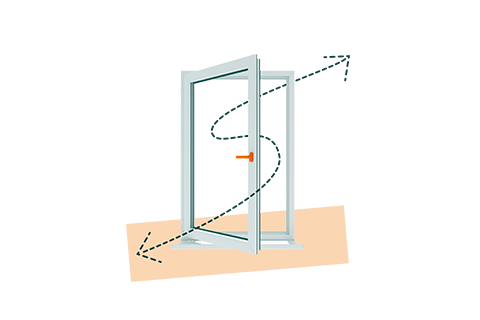Getting to the root of who's responsible for damp or mould in a rental property can be tricky. Read on to explore the boundaries and responsibilities for both landlords and tenants in tackling this maintenance challenge.
Damp and mould - what is it and where does it come from?
It's estimated that 34 percent of rental properties in the UK experience damp and mould issues - so if you're faced with this challenge you're not alone. This is largely due to a significant proportion of rental housing stock being older and built with single skin brick. This means it's harder to keep the property warm and insulated and makes it more vulnerable to the difference between the internal and external temperature.
Damp is simply excess water, moisture or condensation in a property. Damp can lead to mould.
Understanding the cause of damp which often leads to mould is key to understanding where responsibilities lie when tackling the issue.
It isn't always easy to diagnose and may require a professional to help identify the source of the problem.
What are my responsibilities in remedying damp or mould?
If it's determined that the damp and mould are caused by the building structure it is the responsibility of the landlord to remedy the issue, examples of the type of damp which would damage the building structure are rising damp and penetrating damp.
What is rising damp?
Rising damp occurs when moisture travels up from the ground through a building's brickwork structure. This can occur for a number of reasons, commonly it's because the building is missing or has an inadequate damp proof course. The purpose of a damp proof course is to be a barrier and block the upwards movement of moisture into a property.
What is penetrating damp?
Penetrating damp occurs when water enters your property through a wall. This is normally caused by a fault in the structure of the building, it could be something very simple to fix like guttering which is broken, or something more complex like failing masonry.
Does my tenant have a responsibility?
Damp and mould are often worsened by condensation, so understanding whether there are elements in the property that cause excess condensation can be a good conversation for landlords and tenants to have. Working together could help mitigate the issue.
The following actions are likely to cause increased condensation in a property:
- drying clothing inside
- not heating the property adequately
- cooking without using pan lids
- cooking without appropriate extraction
- showering or bathing without utilising extraction
You can ask your tenant to do things to support lower the levels of condensation:
- keep walls and windows free of condensation by wiping down areas water pools e.g. window sills
- report areas of mould as soon as possible directly to you or your letting agent
- ventilate rooms high in moisture e.g. kitchens and bathrooms
- ventilate rooms in which washing is drying
So, is condensation the responsibility of the landlord or tenant?
Condensation build up is often caused by ineffective ventilation, landlords are responsible for ensuring that the building has effective ventilation.
Landlords have the following responsibilities where condensation is concerned:
- ensure there is appropriate ventilation in rooms likely to be high in moisture i.e. if a bathroom does not have a window, then you'll need to install an extractor fan
- explain to your tenants the rooms which are more likely to have condensation build up and how they need to ventilate appropriately
- when mould is reported, arrange for its removal, investigate and fix underlying issues
Legal requirements of landlords
Where damp or mould is caused by the building, it is a legal requirement for landlords to take responsibility for fixing it. This is covered under Section 11 of the Landlord and Tenant Housing Act 1985 - specifically in the 'repairing obligations' section.
My tenant thinks there is damp or mould in my rental property, what should I do?
There are 5 steps to take to resolve this issue:
1. Acknowledge the information from your tenant as soon as possible in writing i.e. via email
2. Arrange for a specialist to assess the property and establish the root cause of the problem
3. Keep your tenant informed about the progress - remember mould and damp can cause health issues for people with underlying health conditions like asthma
4. Remind your tenant of the ways to reduce condensation whilst you're fixing the underlying problem - try to keep moisture build up down
5. Implement the recommendations from your specialist


